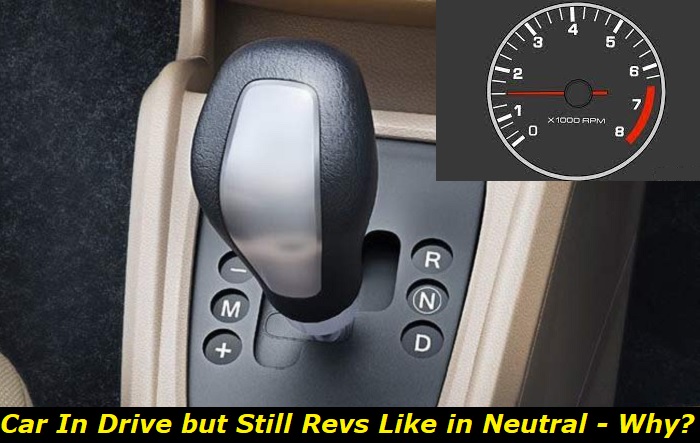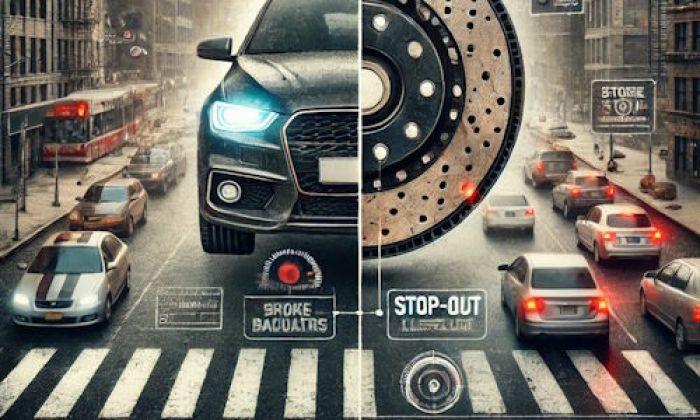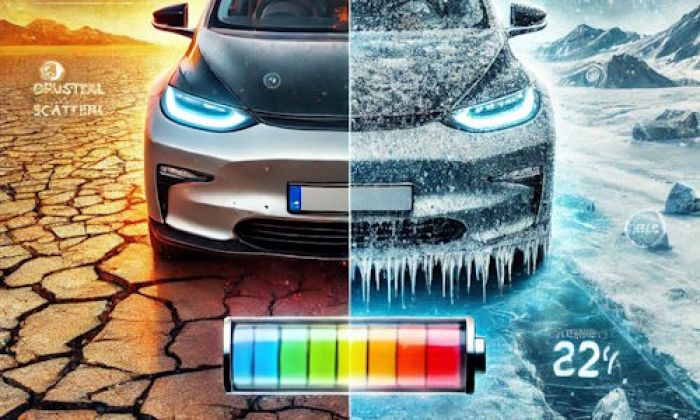A foot press on your gas pedal should make you feel the horsepower powering your automobile. The car's transmission should not shift down to neutral driving. What causes the shift? Could it be one's driving habits? Is there something wrong with the gear? Perhaps you're driving around with worn-out or damaged transmission bands.
Transmission no-shift problem highlights
- Level of importance:High
- Reasons:Control module failure, low fluid,badfluid, mechanical issues
- Needed expertise:High
- Needed tools:Professional tools set
- Time taken:5-10 hours
- Can you drive? Yes, if some gears engage
- Possible issues: Fatal transmission damage, car stationary.

Transmission Shifting
Your car will require a working transmission system to move power from the engine to the wheels as you drive, park, or reverse your automobile. It will move from the engine to the drive shaft and the wheels. It will also change the gears to give you higher acceleration as you cruise on the highway.
Your engine needs a working transmission system. Sudden turns or acceleration may overwork the engine resulting in an overheated engine. So, your car will have enough room to harness the power coming from the engine. The transmission will also give the engine extra support when driving in lower gears to avoid damaging it.
The misaligned transmission is a clear indication that there is something wrong within the transmission system. Let's discuss why your car behaves like it's neutral when you're driving it.
Reasons the Car is in Drive but Revs Like a Car in Neutral
Shift to your car's transmission system. Most of these issues lie within the transmission system. Here are some of the reasons the car feels like it's in neutral while driving it.
1) Worn Clutch Disc
Worn-out clutches are common among cars that operate on manual transmissions. You may find that your vehicle exhibits poor acceleration performance. The engine also strains more when the clutch is worn-out. They will interfere with how the gears shift.
You'll notice a rough transition. You may also need high revolutions per minute to reach your desired speed or a grinding shift. That's it may feel slower despite accelerating it.
Solution
You'll need to check if you have a worn-out clutch. Look for a broken clutch cable. Excessive pushes and pulls may break these cables. You also need to check the hydraulic line. The air may take the volume you need to build the pressure you'll need to operate the clutch.
You may need to replace your clutch if you've hit 50,000 to 100,000 miles without changing it. An unresponsive transmission may indicate a worn-out clutch. It is necessary to get a new one if it's old and non-operable.
2) Faulty Torque Converter
Your automatic transmission will need torque converters to function. The torque converter serves the same function as the clutch in manual transmissions. The torque converter can slip out of gear if it's faulty. The faulty torque converter will cause the engine to rev without transferring power to the wheels.
It causes a shuddering condition as you drive your car. Your car may rumble at high speed despite driving your four-wheeler on a smooth road surface. It's hard to pinpoint a fault in a defective torque converter since it involves fluid dynamics. Low fluid levels can create similar symptoms as a bad torque converter. It is advisable to get the help of an expert to ensure that the problem is solved correctly from the start.
Solution
Replacing a faulty torque converter saves you money. Bad things can happen to your automobile once the torque converter starts failing. Don't wait for other components to fail before fixing the torque converter. If you continue driving your vehicle with a bad torque converter, it will cause severe damage to the components inside your transmission.
So, it is best to take your vehicle to a qualified auto mechanic and have them assess the torque converter. Your mechanic will check the fluid level and evaluate if there is a fluid leak, seal damage, or contamination of your transmission fluid.
3) Old, Inadequate, or Contaminated Transmission Fluid
Your automatic vehicle will need clean transmission fluid for engine power to shift seamlessly to the drive shaft and the wheels since it helps the gears shift. It also lubricates all the moving components on the car's gearbox.
The transmission also keeps the system from overheating. The gears work tirelessly to move your vehicle through different speed levels. The strenuous task overheats the system and may cause gears to wear out. That's why you need uncontaminated transmission fluid.
Internal pressure also reduces as your transmission fluid diminishes. The low pressure may cause transmission slips. The slips may hold back your car as you press the gas pedal, making it feel slower despite applying pressure on the gas pedal.
Solution
Over time, the transmission fluid can accumulate debris and dirt. The contaminated transmission fluid can cause a rough and stalling engine, especially when you press the gas pedal. That's why it's advisable to keep changing the transmission fluid regularly or when you hit 30,000 to 60,000 miles. Check the owner's manual for all the servicing intervals.
You'll need to refill or change your transmission fluid to prevent a misbehaving transmission system. Also, check for leaks. Transmission fluid leaks may cause damage to your engine. If leakage or contamination occurs, it causes shifting issues. You'll experience trouble shifting your gears.
You can do it as a DIY project or let a mechanic solve the transmission issue. A mechanic will help resolve any underlying issues impacting the transmission fluid.
4) Bad Shift Solenoid
Modern cars need a transmission shift solenoid. It serves as a hydraulic valve that manages the flow of transmission fluid. The shift solenoid is a part that can cause a lot of strange problems with your automatic transmission if one is faulty. When this part malfunctions, the gears may start slipping. It may become stuck in neutral.
Electrical issues, contaminated transmission fluid, or wear and tear may cause a failing shift solenoid.
Solution
Take your car for a solenoid check as soon as you notice delayed shifts, trouble engaging gears, or getting stuck while shifting. You may also observe that your four-wheeler may become sluggish or have trouble moving from one gear to the next. You may also notice that your engine may rev despite applying brakes.
You may need to replace the whole solenoid pack.
5) Bad Throttle Body
In more modern vehicles, the throttle boy controls the fuel that flows to the engine. The throttle body valve will open when you press the gas pedal, letting more flow into the motor. It forces the throttle body to deliver additional fuel to the engine.
The throttle body works under strenuous conditions. Over time, it can become obstructed due to the accumulation of carbon deposits. When this occurs, it will be impossible to get sufficient air into the engine. Thus, causing a change in performance. You'll notice poor acceleration. Your car may also unexpectedly shift down a gear.
Solution
Cleaning the throttle body is the most common solution for this issue. That's a DIY job. Go through the owner's manual for further guidance.
But you can also let a professional assess the throttle body and correct the defect observed on the throttle body.
6) Defective Engine Control model
Modern cars rely on ECM (Engine Control Module) or ECU (Engine Control Unit) for optimal engine performance. Therefore, you'll need an operable ECM when driving your car. However, the ECM may sometimes fail to function.
It may cause performance issues on your engine. One may notice poor fuel efficiency and acceleration if they have a failing ECM.
Solution
Schedule an appointment with your mechanic for a thorough assessment. Ignoring ECM issues may cause severe damage to your engine.
7) Blown Transmission
You'll need a working transmission when driving your car. You may have a blown transmission if your vehicle shifts gears unexpectedly. It could be on the verge of breaking down if you notice that it's hard to put your vehicle into gear, it emits a grinding sound while accelerating, or your car can't move.
In this case, the transmission is either failing or has already stopped functioning.
Solution
Perform a thorough assessment before trying to replace your transmission. It's costly to maintain a damaged or blown transmission. A replacement is the best solution to fix it.
While you do the replacement yourself, an experienced and qualified team will do it better and fix any other component that may have contributed to the damage to your transmission. Therefore, consult a specialist and get an opinion before deciding to replace it.
Wrapping up
Nothing beats the sound of a revving engine cruising on a smooth road surface. But the revs should match the speed of your wheels. Sadly, all the issues we've discussed above may cause poor performance as you drive your car.
Take your car to the mechanic for inspection once you observe any of these conditions. It's vital to take corrective action before the problem worsens. Acting fast can help to prevent more serious issues from developing in your engine.
About the authors
The CarAraC research team is composed of seasoned auto mechanics and automotive industry professionals, including individuals with advanced degrees and certifications in their field. Our team members boast prestigious credentials, reflecting their extensive knowledge and skills. These qualifications include: IMI: Institute of the Motor Industry, ASE-Certified Master Automobile Technicians; Coventry University, Graduate of MA in Automotive Journalism; Politecnico di Torino, Italy, MS Automotive Engineering; Ss. Cyril and Methodius University in Skopje, Mechanical University in Skopje; TOC Automotive College; DHA Suffa University, Department of Mechanical Engineering






Add comment